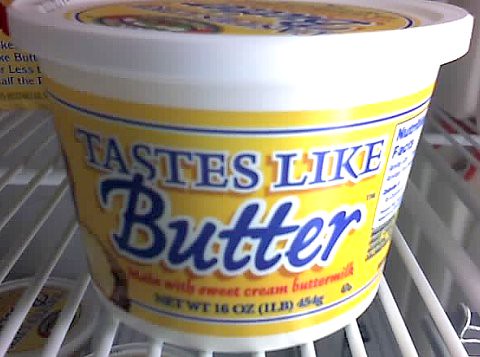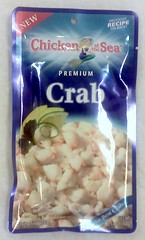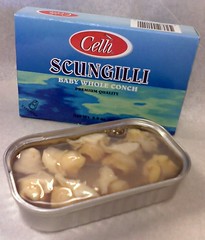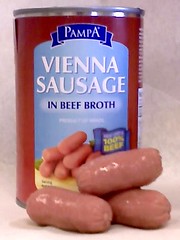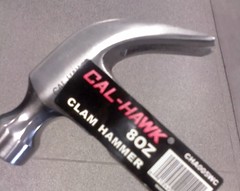30 January, 2008
28 January, 2008
Farewell, Zoe's...

Zoe's Fish and Chop House has been operating on Route 10 in Easthampton since 1996. My wife and I first started going there a couple of years ago, lured by their wonderful Sunday brunch buffet which featured marvelously fresh iced oysters on the half shell, large plump peel-and-eat shrimp, roast beef and roast turkey breast at the carving station, and a variety of breakfast foods, seafood entrees, and desserts. Elegant and inexpensive, Zoe's was well worth the 40-minute drive even on icy winter mornings.
Unfortunately, early in January, the owners announced that Zoe's would be closing on 5 February 2008; the large, roomy, rambling building had been sold (and will be torn down for redevelopment) and that they hoped to resurrect Zoe's in a new location soon. The rising cost of fuel, food, labor, and maintenance have made it difficult to manage in the current location.
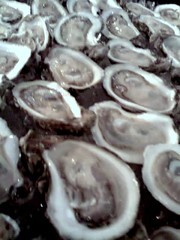 We made our final visit to Zoe's last Sunday, having made reservations a week earlier (the restaurant is so busy that they no longer take walk-ins for Brunch seatings.) The oysters, as always, were simply perfect -- beautifully fresh New England oysters, glistening in their half-shells on a bed of cracked ice. With them, I enjoyed one of Zoe's most excellent Bloody Marys - made with cracked black pepper and a dollop of horseradish stirred in, there is no finer drink to accompany raw shellfish. Other seafoods on offer included Cajun-style snapper (mild but still tasty), herbed salmon (a tad overcooked, but still moist, topped with a flavorful herbed crumbing that enhanced rather than overpowered the fish), hazlenut schrod (a favorite of my dining companions, though I don't care for hazlenuts at all), and mussels in garlic sauce (marvelous wild-caught Northeastern mussels, steamed open and dressed with a sauce that was little more than garlic and onion gently sauteed in butter - stellar.) Although I concentrated my attentions on the seafood, I did do some sampling around of the other offerings. As always, the fresh (and wherever possible, locally-sourced) ingredients were top-notch, from the delicately steamed mixed vegetables to the kielbasa made in nearby Chicopee MA. An extra touch that is often unnoticed and underappreciated: The kitchen staff kept the vegetables refreshed throughout the morning so that they never lost their marvelous al dente texture. And, of course, the service was every bit as good as the food. Our waitress was friendly and attentive without being annoying.
We made our final visit to Zoe's last Sunday, having made reservations a week earlier (the restaurant is so busy that they no longer take walk-ins for Brunch seatings.) The oysters, as always, were simply perfect -- beautifully fresh New England oysters, glistening in their half-shells on a bed of cracked ice. With them, I enjoyed one of Zoe's most excellent Bloody Marys - made with cracked black pepper and a dollop of horseradish stirred in, there is no finer drink to accompany raw shellfish. Other seafoods on offer included Cajun-style snapper (mild but still tasty), herbed salmon (a tad overcooked, but still moist, topped with a flavorful herbed crumbing that enhanced rather than overpowered the fish), hazlenut schrod (a favorite of my dining companions, though I don't care for hazlenuts at all), and mussels in garlic sauce (marvelous wild-caught Northeastern mussels, steamed open and dressed with a sauce that was little more than garlic and onion gently sauteed in butter - stellar.) Although I concentrated my attentions on the seafood, I did do some sampling around of the other offerings. As always, the fresh (and wherever possible, locally-sourced) ingredients were top-notch, from the delicately steamed mixed vegetables to the kielbasa made in nearby Chicopee MA. An extra touch that is often unnoticed and underappreciated: The kitchen staff kept the vegetables refreshed throughout the morning so that they never lost their marvelous al dente texture. And, of course, the service was every bit as good as the food. Our waitress was friendly and attentive without being annoying.I hope that the owner finds a suitable location for a grand reopening. Zoe's Steak and Chop house will be fondly missed.
23 January, 2008
22 January, 2008
Tastes Like...What?
It doesn't taste like butter. It tastes like salt and slightly rancid vegetable oil with just a hint of that sour smell babies make when they spit up.
20 January, 2008
How To Make Scallion Pancakes
Scallion pancakes are a delicious appetizer and dim sum treat found in many Chinese restaurants. A kind of fried bread, they are crispy and flaky on the outside, tender and a bit chewy on the inside, with shreds of finely diced scallions between the savory layers of pancake. And surprisingly enough, they aren't that hard to make.
You'll need:
3 1/2 cups of flour
1 heaping teaspoon of salt
2 tablespoons of vegetable oil
1 1/4 cups of boiling water
Sesame oil
1 bunch of scallions (3 to 5 scallions)
Oil for frying
This is easiest with a stand mixer. If you don't have one, you can do the initial mixing and kneading by hand.
 Put flour into the bowl of your mixer and add salt. Using the dough hook, turn the mixer on low speed and allow the salt to stir into the flour. Then drizzle in 2 tablespoons of vegetable oil. Allow the mixer to incorporate the oil into the flour while you bring 1 1/4 cups of water to a boil.
Put flour into the bowl of your mixer and add salt. Using the dough hook, turn the mixer on low speed and allow the salt to stir into the flour. Then drizzle in 2 tablespoons of vegetable oil. Allow the mixer to incorporate the oil into the flour while you bring 1 1/4 cups of water to a boil. Turn the mixer to medium speed and add the boiling water slowly. As the water is combined with the flour, turn the mixer speed up and let the dough hook do the work. You may have to scrape down the sides of the mixing bowl a couple of times to get the water worked into the flour evenly.
Turn the mixer to medium speed and add the boiling water slowly. As the water is combined with the flour, turn the mixer speed up and let the dough hook do the work. You may have to scrape down the sides of the mixing bowl a couple of times to get the water worked into the flour evenly. When the dough holds together well, turn it out from the bowl and knead it a few times by hand on a lightly floured surface until you have a smooth, elastic dough. It will be very firm, appear silky, and not be sticky at all. Lightly oil a bowl with a little bit of sesame oil. Put the dough into the bowl and turn it a few times to coat the dough's surface and keep it from drying out. Cover with a damp towel and allow it to rest for at least twenty minutes. If you're going to do this step ahead, it's okay to let the dough rest longer - up to a couple of hours if you need to. Letting the dough rest allows the gluten in the flour to relax after the kneading, and there's no hurry.
When the dough holds together well, turn it out from the bowl and knead it a few times by hand on a lightly floured surface until you have a smooth, elastic dough. It will be very firm, appear silky, and not be sticky at all. Lightly oil a bowl with a little bit of sesame oil. Put the dough into the bowl and turn it a few times to coat the dough's surface and keep it from drying out. Cover with a damp towel and allow it to rest for at least twenty minutes. If you're going to do this step ahead, it's okay to let the dough rest longer - up to a couple of hours if you need to. Letting the dough rest allows the gluten in the flour to relax after the kneading, and there's no hurry. While the dough is resting, trim the roots and nasty bits off a bunch of scallions and then chop them very finely into rings as thinly as you can manage. You'll need anywhere from three to five scallions, depending on how big they are. When they're all chopped, set them aside in a bowl.
While the dough is resting, trim the roots and nasty bits off a bunch of scallions and then chop them very finely into rings as thinly as you can manage. You'll need anywhere from three to five scallions, depending on how big they are. When they're all chopped, set them aside in a bowl. After the dough has rested, roll it into a rough cylinder and divide that into eight equal segments. On a lightly floured surface, flatten each cylinder slightly with the palm of your hand and then roll it out to about an eighth of an inch thick. Sprinkle the pancake with flour lightly if you need to prevent sticking.
After the dough has rested, roll it into a rough cylinder and divide that into eight equal segments. On a lightly floured surface, flatten each cylinder slightly with the palm of your hand and then roll it out to about an eighth of an inch thick. Sprinkle the pancake with flour lightly if you need to prevent sticking. Rub a light coating of sesame oil all over the top surface of the pancake using your fingers. You don't need much; just a light glaze - enough to make the pancake shiny with oil. Then sprinkle it lightly all over with the finely chopped scallions. Don't use too many - just a tablespoon or so will do. If you put too many on, the pancakes won't cook well and the scallions will break through the flour and make a mess.
Rub a light coating of sesame oil all over the top surface of the pancake using your fingers. You don't need much; just a light glaze - enough to make the pancake shiny with oil. Then sprinkle it lightly all over with the finely chopped scallions. Don't use too many - just a tablespoon or so will do. If you put too many on, the pancakes won't cook well and the scallions will break through the flour and make a mess. Carefully roll the pancake into a tight rope like a miniature jelly roll, making a scallion-filled dough stick. Then take that stick and form it into a coil, keeping the seams on the inside. Pinch the trailing end closed and tuck it under the coil to keep the scallions on the inside.
Carefully roll the pancake into a tight rope like a miniature jelly roll, making a scallion-filled dough stick. Then take that stick and form it into a coil, keeping the seams on the inside. Pinch the trailing end closed and tuck it under the coil to keep the scallions on the inside. Gently press the top of the coil with the palm of your hand to flatten it a bit. It will look something like the picture on the left.
Gently press the top of the coil with the palm of your hand to flatten it a bit. It will look something like the picture on the left. Dust the coil with a bit of flour on both sides to prevent sticking, and roll it out into a thin pancake. Try to get the thickness between 1/8 and 1/4 of an inch. You'll see the scallion bits through the thin layers of pancake, and some of the scallions on the edge might break through a bit. Don't worry about them, that's OK. You should end up with about a 7- or 8-inch pancake when you're all done. After each pancake is rolled out, rub the top and bottom surfaces with a bit of sesame oil and stack them up between sheets of waxed paper. You can store the stack in a plastic bag in the refrigerator until you're ready to cook them, and they can be made up to three days ahead of when you need them. If you wrap each pancake individually in waxed paper, you can even freeze them for later use.
Dust the coil with a bit of flour on both sides to prevent sticking, and roll it out into a thin pancake. Try to get the thickness between 1/8 and 1/4 of an inch. You'll see the scallion bits through the thin layers of pancake, and some of the scallions on the edge might break through a bit. Don't worry about them, that's OK. You should end up with about a 7- or 8-inch pancake when you're all done. After each pancake is rolled out, rub the top and bottom surfaces with a bit of sesame oil and stack them up between sheets of waxed paper. You can store the stack in a plastic bag in the refrigerator until you're ready to cook them, and they can be made up to three days ahead of when you need them. If you wrap each pancake individually in waxed paper, you can even freeze them for later use. To cook: Put less than half an inch of cooking oil in a skillet and heat it to about 350 F. Using tongs, carefully place a pancake into the oil and fry it until it is browned. As it fries, you may notice the center of the pancake lifting above the oil on the steam it generates. Use your tongs to slightly lift the edges and let the steam escape so the center browns, too. Turn the pancake over and brown the other side, too. As the pancakes cook, you'll see the trapped air bubbles in the pancakes expand and brown. The pancakes will be flaky, crisp, and all in layers. Drain on absorbent paper and serve hot, with a dipping sauce if you like. I make a simple dipping sauce of 1/4 cup soy sauce, a teaspoon of oyster sauce, 2 tablespoons of rice vinegar, a teaspoon of honey, some of the chopped scallions left over from making the pancakes, and some crushed red pepper.
To cook: Put less than half an inch of cooking oil in a skillet and heat it to about 350 F. Using tongs, carefully place a pancake into the oil and fry it until it is browned. As it fries, you may notice the center of the pancake lifting above the oil on the steam it generates. Use your tongs to slightly lift the edges and let the steam escape so the center browns, too. Turn the pancake over and brown the other side, too. As the pancakes cook, you'll see the trapped air bubbles in the pancakes expand and brown. The pancakes will be flaky, crisp, and all in layers. Drain on absorbent paper and serve hot, with a dipping sauce if you like. I make a simple dipping sauce of 1/4 cup soy sauce, a teaspoon of oyster sauce, 2 tablespoons of rice vinegar, a teaspoon of honey, some of the chopped scallions left over from making the pancakes, and some crushed red pepper.18 January, 2008
Fishy Delights 8: Chicken of the Sea Premium Crab
When choosing crabmeat, canned has never been my first choice. Picking a crab is tedious work, but the quality of fresh-picked crab is so much better than just about any alternative that I really don't mind (though some brands of frozen crabmeat come up a close second.)
But I kept hearing good things about these new "pouched" seafood things, so when one of the local markets had a sale on their Chicken of the Sea brands, I thought maybe it was worth a try.
It would be a lie to say that I was disappointed, because I didn't have very high expectations to begin with, so let's just say that I got exactly what I thought I was going to get, no more and no less.
Even given that the picture on the front label of the pouch was most likely a highly retouched, best case scenario, the crab inside looked nothing like the photo. There were no enticingly pink edges, and far more little shreds than the package art suggested. Instead, the crabmeat was bone-white, in tiny bits that looked like they were picked from the body clusters of small crabs.
Afteer pouring off the processing water, I was left with a smidge over two ounces of the most bland and flavorless crab I have ever tasted. I might as well have been eating surimi, it was that dull. Even adding some mayo and relish to make an impromptu crab salad didn't help - it was like eating mayo and relish on a cracker. Blah.
To add insult to injury, Chicken of the Sea gives a stunningly awful recipe for "easy crab cakes" on the back of the pouch. The recipe calls more more filler than crab. Feh.
Treasures In An Old House

My wife and I recently moved to an 1920's Craftsman-style farmhouse. It hadn't been lived in for about ten years, and there was a lot of stuff in the house that we needed to clear out before we could move in.
These cans were of particular interest; I found them in a decomposing cardboard box under the stairs and they were among the few that hadn't completely rotted through and disintegrated. I suspect that they were more than twenty years old when we discovered them. There hasn't been a Shop Rite supermarket in this town since 1983.
We made many other, somewhat less disgusting, discoveries as well. In the kitchen pantry, we found a jar of pickles that had been left on the window sill. Over the years, the sunlight had bleached the pickles to a pale, ivory white. And in the cupboards there were boxes of dried food mixes, detergents, and kitchen items dating back to the 1940's (we sold most of them to collectors on eBay.)
17 January, 2008
Whatever Happened to Country Club Soda?
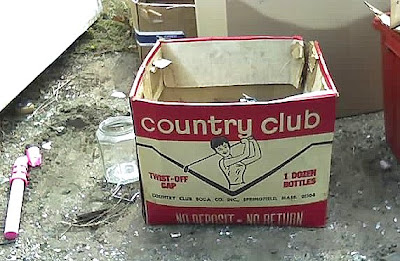 Once, nearly every town had their own local bottling company making flavored soft drinks. Enfield, CT had The Thompsonville Bottling Company, which produced a line of sodas of their own as well as national brands such as Moxie under contract.
Once, nearly every town had their own local bottling company making flavored soft drinks. Enfield, CT had The Thompsonville Bottling Company, which produced a line of sodas of their own as well as national brands such as Moxie under contract.In Springfield, MA, the local bottler was Country Club Soda Company, which registered their first trademark in 1908. When I was a kid growing up in the area, we always had a couple of bottles of Country Club in the fridge (especially the ginger ale, which seemed to be my mother's favorite.)
I'm not really sure when Country Club started to get scarce in their hometown. By the early 1980's it was already hard to find. In 1985, Seven-Up bought the company and there were rumors that they were going to take the brand national, but I guess nothing ever came of it.
The only time I ever see Country Club soda these days, it's the occasional bottle that shows up on eBay or at a flea market. Or like in the picture up above: An old cardboard box from the early 1970s. Beat up and filled with junk, tossed in the dirt and debris at the foot of a Salvation Army collection bin.
Burger King Ketchup & Fries Potato Snack
I didn't really know what to expect when these things first showed up in the vending machines at work, but the initial five bags the vending company experimented with were gone in half a day, so I thought they might be interesting to try.
The teaser copy on the back of the bag calls the flavor a "mystical merge of ketchup, fries, and snack chips." For a more realistic comparison, think of a broad noodle made of dehydrated potato, dusted with a salty bright-red tomato-flavored powder. I have to admit I kind of like these, not so much for the ketchup flavor (which is a little vile) but for the delicious dried-potato flavor. That spudly taste so reminiscent of taters and plastics is why I like Pringles, Munchos, and Ore-Ida Potato Buds. There's just no accounting for taste, huh?
The teaser copy on the back of the bag calls the flavor a "mystical merge of ketchup, fries, and snack chips." For a more realistic comparison, think of a broad noodle made of dehydrated potato, dusted with a salty bright-red tomato-flavored powder. I have to admit I kind of like these, not so much for the ketchup flavor (which is a little vile) but for the delicious dried-potato flavor. That spudly taste so reminiscent of taters and plastics is why I like Pringles, Munchos, and Ore-Ida Potato Buds. There's just no accounting for taste, huh?
Labels:
burger king,
junk food,
snacks
16 January, 2008
The Hiatus Is Over.
This blog has been abandoned for too long. It's back with a new name and a new look, and I hope to stick to a three-posts-minimum-per-week schedule. Wish me luck; I hope I don't run out of things to say.
15 January, 2008
Fishy Delights 7: Celli Scungilli (Baby Whole Conch)
At $1.50 for a 3.2-ounce tin, this is one of the more expensive tinned seafood items at my local job-lot store. Luckily, it is also one of the more tasty.
Nestled inside the tin I bought were nine small but meaty nuggets, each, the label assured me, being an entire whole baby conch. They were tender, though still resilient in the typical canned-shellfish way, and quite delicious. The flavor was reminiscent of clams and the bite sized chunks were surprisingly satisfying. Alas, the price (which comes out to a little less than $6.00 a pound, and that includes all that water they're packed in) is far too high for a novelty snack.
Nestled inside the tin I bought were nine small but meaty nuggets, each, the label assured me, being an entire whole baby conch. They were tender, though still resilient in the typical canned-shellfish way, and quite delicious. The flavor was reminiscent of clams and the bite sized chunks were surprisingly satisfying. Alas, the price (which comes out to a little less than $6.00 a pound, and that includes all that water they're packed in) is far too high for a novelty snack.
Labels:
canned fish,
fishy-delights,
seafood
14 January, 2008
Pampa Vienna Sausage In Beef Broth
I'm a sucker for strange-looking canned foods at the job-lot store. Sometimes it works out pretty well. Other times...well...
Take Pampa Vienna Sausage, for example. Usually, vienna sausage isn't that bad. It's not gourmet food, but it's passable for a quick lunch if I'm stuck at my desk, working a flea market, or out fishing. So when I found this big 400g can of Brazilian-made meatsticks at the local job-lot, I gambled a buck and bought it.
The label claims that "MEAT USED IS 100% BEEF." That might be true, but that doesn't guarantee goodness, either. The sausages are somewhat haphazardly tumbled into the tall can and topped with a rather thick sort of broth. They're redder than American-made viennas, and kind of bumpy and irregular, which is kind of strange when you're used to the pale, glistening, uniform cylinders produced by Armour and Libby. But it's the texture and flavor that really sets these apart.
Take Pampa Vienna Sausage, for example. Usually, vienna sausage isn't that bad. It's not gourmet food, but it's passable for a quick lunch if I'm stuck at my desk, working a flea market, or out fishing. So when I found this big 400g can of Brazilian-made meatsticks at the local job-lot, I gambled a buck and bought it.
The label claims that "MEAT USED IS 100% BEEF." That might be true, but that doesn't guarantee goodness, either. The sausages are somewhat haphazardly tumbled into the tall can and topped with a rather thick sort of broth. They're redder than American-made viennas, and kind of bumpy and irregular, which is kind of strange when you're used to the pale, glistening, uniform cylinders produced by Armour and Libby. But it's the texture and flavor that really sets these apart.
You know how, when you set a bowl of Jell-o into the refrigerator without a cover, the gelatine develops a tough, membraneous skin? That's what these sausages are like right from the can: an al dente leathery "skin" contiguous with a somewhat grainy interior. There is an unusual and almost off-putting mouthfeel to these. Combined with the slightly rancid flavor, I can wholeheartedly recommend that you do not fail to leave these on the grocer's shelf should you ever encounter them yourself.
Labels:
beef,
canned food,
disgusting,
meat
13 January, 2008
The Right Tool for the Right Job
Subscribe to:
Posts (Atom)



